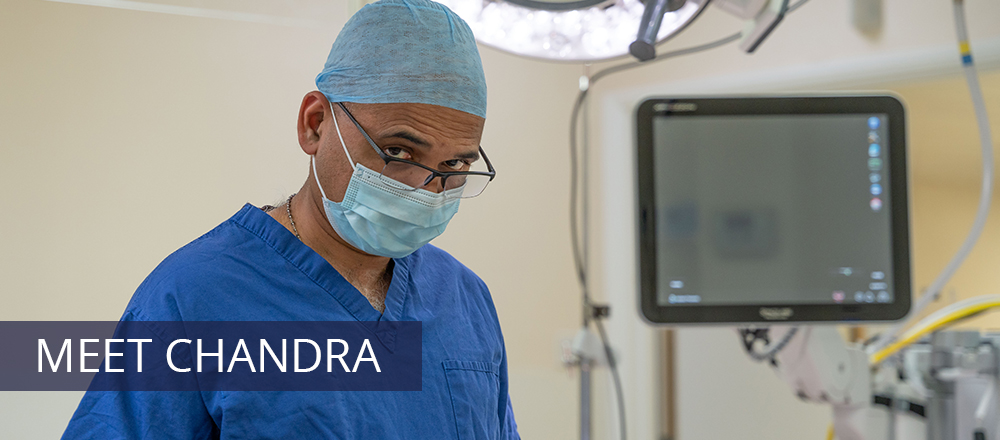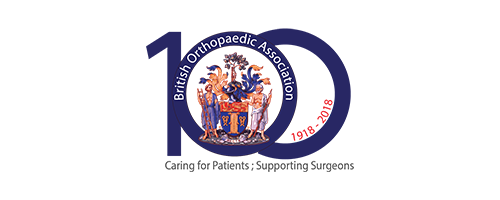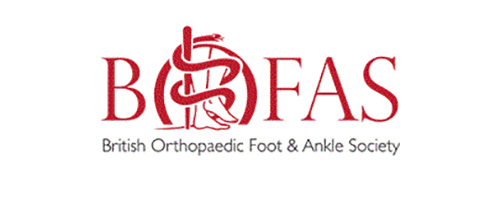The information outlined below on common knee conditions and treatments is provided as a guide only and it is not intended to be comprehensive. Discussion with Mr Chandra Rao is important to answer any questions that you may have.
For information about any additional conditions not featured within the site, please contact us for more information.
COMMON KNEE CONDITIONS
In practice knee arthritis is not just the cartilage “wearing out” and there are a number of changes that occur within the cells of the cartilage and it’s composition that lead to the joint surface becoming damaged. There are a number of causes for developing osteoarthritis that include a genetic predisposition, previous injuries to the joint, previous surgery, an infection in the joint, and certain occupations to name but a few.
The treatment of knee arthritis is multi-modal and includes :
Simple pain relief and anti-inflammatories for mild to moderate arthritis can often get people through the early stages and prolong the time before resorting to more invasive treatments.
Weight loss can significantly improve the symptoms for patients with BMI >25. Interestingly 7 times body weight is transmitted through the kneecap joint when performing a squat or going up stairs, whilst 3 times bodyweight is transmitted through the main knee joint (tibiofemoral joint) during normal walking. This results in a dramatic decrease in forces passing through the joint with relatively modest weight loss and with this, symptoms of pain and stiffness can improve.
Topical Capsaicin cream is currently recommended in NICE guidance for knee arthritis and can sometimes be effective enough to avoid resorting to surgery. Capsaicin is a chemical derived from chilli’s and causes a burning sensation that helps to modulate pain signals coming from knee arthritis.
Steroid injections to the knee may provide relief of symptoms. This may be transient, but can be performed on multiple occasions and may be all that is necessary to maintain acceptable symptom control.
Knee Braces can sometimes be used to “offload” a worn area of the knee and protect it from the forces of bodyweight if only one part of the knee has arthritis (usually the inside or medial compartment of the knee). In selected cases these can sometimes offer a number of years relief prior to resorting to more invasive treatments such as surgery.
Anatomy
Three bones meet to form your knee joint: your thighbone (femur), shinbone (tibia), and kneecap (patella). Two wedge-shaped pieces of fibrocartilage act as “shock absorbers” between your thighbone and shinbone. These are the menisci. The menisci help to transmit weight from one bone to another and play an important role in knee stability.
The meniscus can tear from acute trauma or as the result of degenerative changes that happen over time. Tears are noted by how they look, as well as where the tear occurs in the meniscus. Common tears include bucket handle, flap, and radial. Sports-related meniscus injuries often occur along with other knee injuries, such as anterior cruciate ligament (ACL) tears.
Causes of Meniscus Tears
Acute meniscus tears often happen during sports. These can occur through either a contact or non-contact injury—for example, a pivoting or cutting injury.
As people age, they are more likely to have degenerative meniscus tears. Aged, worn tissue is more prone to tears. An awkward twist when getting up from a chair may be enough to cause a tear in an aging meniscus.
Symptoms
You might feel a “pop” when you tear the meniscus. Most people can still walk on their injured knee and many athletes are able to keep playing with a tear. Over 2 to 3 days, however, the knee will gradually become more stiff and swollen.
The most common symptoms of a meniscus tear are:
Pain
Stiffness and swelling
Catching or locking of your knee
The sensation of your knee “giving way”
Inability to move your knee through its full range of motion
Treatment of Meniscus Tears
There are a large number of treatment options for a damaged meniscus. Many patients’ symptoms will improve with simple anti-inflammatories, use of a temporary knee brace and early rehabilitation, possibly under the supervision of a physiotherapist. For those that continue to struggle with symptoms despite these measures surgery may be required. This is usually in the form of Knee Arthroscopy (key hole knee surgery) where meniscal repair can be performed in some cases or removal of the damaged part can be performed if unrepairable (arthroscopic meniscectomy). Our surgical team have trained extensively in arthroscopic surgery for knee injuries and will be able to advise you on all types of treatment for your knee injury.
ACL injuries
Knee injuries can occur during sports such as skiing, tennis, squash, football and rugby. ACL injuries are one of the most common types of knee injuries, accounting for around 40% of all sports injuries. You can tear your ACL if your lower leg extends forwards too much. It can also be torn if your knee and lower leg are twisted.
Common causes of an ACL injury include:
landing incorrectly from a jump
stopping suddenly
changing direction suddenly
having a collision, such as during a football tackle
If the ACL is torn, your knee may become very unstable and lose its full range of movement.
This can make it difficult to perform certain movements, such as turning on the spot. Some sports may be impossible to play.
Deciding to have surgery
The decision to have knee surgery will depend on the extent of damage to your ACL and whether it’s affecting your quality of life. If your knee does not feel unstable and you do not have an active lifestyle, you may decide not to have ACL surgery. But it’s important to be aware that delaying surgery could cause further damage to your knee.
Before having surgery
Before having ACL surgery, you may need to wait for any swelling to go down and for the full range of movement to return to your knee. You may also need to wait until the muscles at the front of your thigh (quadriceps) and back of your thigh (hamstrings) are as strong as possible. If you do not have the full range of movement in your knee before having surgery, your recovery will be more difficult. It’s likely to take at least 3 weeks after the injury occurred for the full range of movement to return.
Before having surgery, you may be referred for physiotherapy to help you regain the full range of movement in your knee. Your physiotherapist may show you some stretches that you can do at home to help keep your leg flexible. They may also recommend low-impact exercise, such as swimming or cycling. These types of activities will improve your muscle strength without placing too much weight on your knee. You should avoid any sports or activities that involve twisting, turning or jumping.
Reconstructive ACL surgery
A torn ACL cannot be repaired by stitching it back together, but it can be reconstructed by attaching (grafting) new tissue on to it. The ACL can be reconstructed by removing what remains of the torn ligament and replacing it with a tendon from another area of the leg, such as the hamstring or patellar tendon. The patellar tendon attaches the bottom of the kneecap (patella) to the top of the shinbone (tibia).
Risks of ACL surgery
ACL surgery fully restores the functioning of the knee in more than 80% of cases. But your knee may not be exactly like it was before the injury, and you may still have some pain and swelling. This may be because of other injuries to the knee, such as tears or injuries to the cartilage, which happened at the same time as or after the ACL injury. As with all types of surgery, there are some small risks associated with knee surgery, including infection, a blood clot, knee pain, and knee weakness and stiffness.
Recovering from surgery
After having reconstructive ACL surgery, a few people may still experience knee pain or instability.Recovering from surgery usually takes around 6 months, but it could be up to a year before you’re able to return to full training for your sport.
COMMON KNEE TREATMENTS
ACL reconstruction is usually done by keyhole or arthroscopic surgery, meaning it’s carried out through several small cuts into your knee. Once the anaesthetic has taken effect, your surgeon will make these cuts in the skin over your knee. They’ll use an arthroscope – a thin, flexible tube with a light and camera on the end of it – to see inside your knee.
The surgery involves replacing your torn ligament with a graft, which your surgeon will take first. The graft is usually a piece of tendon from another part of your knee, for example:
- hamstrings, which are tendons at the back of your thigh
- the patellar tendon, which holds your kneecap in place
Sometimes, a graft from a donor may be used. This is called an allograft and will be collected before your surgery.
Your surgeon will then drill a tunnel through your upper shin bone and lower thigh bone. They’ll thread the graft in through the tunnel and fix it in place, usually with screws or staples. Before finishing the operation, your surgeon will make sure there is enough tension on the graft and that you have full range of movement in your knee. Then they’ll close the cuts with stitches or adhesive strips.
Your operation will usually last between one and three hours.
Recovering from ACL Reconstruction
It usually takes about six months to a year to make a full recovery from ACL reconstruction. You’ll see a physiotherapist within the first few days after your operation, who will give you a rehabilitation programme to follow with exercises specific to you. These will depend on many things, including the extent of the damage to your knee and the level of activity you’re hoping to get back to.
Following your rehabilitation programme will help you get your full strength and range of motion back in your knee. Many people are able to progress to walking without crutches within about two weeks after surgery. It usually takes about six to nine months to be able to go back to playing sport. This varies from person to person though and will depend on the sport you play and how well you’re recovering. Some people wear a knee brace when they return to playing sport. However, they can be bulky and awkward to wear. You don’t need to wear one – it doesn’t seem to make a difference to how well your knee functions. But you might find that it helps build your confidence as your knee will feel supported.
During your recovery, you can take over-the-counter painkillers such as paracetamol or anti-inflammatory medicines such as ibuprofen. Make sure you read the patient information that comes with your medicine and if you have any questions, speak to your pharmacist for advice. You can also apply ice packs (or frozen peas wrapped in a towel) to your knee to help reduce pain and swelling. Don’t apply ice directly to your skin though, as it can damage it.
Your surgeon will be able to advise you about when you can return to work, driving, and other activities.
An arthroscopy is a type of keyhole surgery used to diagnose and treat problems with joints.
Arthroscopy equipment is very small, so only small cuts in the skin are needed. This means it has some advantages over “open” surgery, including:
- less pain after the operation
- faster healing time
- lower risk of infection
- you can often go home the same day
- you may be able to return to normal activities more quickly
When an arthroscopy is used
You might need an arthroscopy if you have problems such as persistent joint pain, swelling or stiffness, and scans have not been able to find the cause. An arthroscopy can be used to assess the level of joint damage resulting from an injury, such as a sports injury, or from underlying conditions that can cause joint damage, such as osteoarthritis.
The procedure can also be used to treat a range of joint problems and conditions, including:
- repairing damaged cartilage
- removing fragments of loose bone or cartilage
- draining away any excess fluid
- treating arthritis, a torn anterior cruciate ligament (ACL)
How an arthroscopy is carried out
Before having an arthroscopy, you’ll usually need to attend a pre-admission clinic. During the appointment, your general health will be assessed to make sure you’re ready for surgery. You’ll also be given information about issues such as:
- what and when you can eat and drink on the day of surgery
- whether you should stop or start any medicines before surgery
- how long it will take for you to recover from surgery
- whether you’ll need to do rehabilitation exercises after surgery
Your surgical team will explain the benefits and risks of having an arthroscopy. You’ll also be asked to sign a consent form to confirm you agree to have the operation and that you understand what’s involved, including the potential risks.
The procedure
An arthroscopy is usually carried out under general anaesthetic, although sometimes a spinal or local anaesthetic is used. Your anaesthetist will explain which type of anaesthetic is most suitable for you. Sometimes, you may be able to say which you would prefer.
If you have a local anaesthetic, your joint will be numbed so you do not feel any pain. You may still feel some sensations during the procedure, such as a slight tugging, as the surgeon works on the joint. Antibacterial fluid is used to clean the skin over the affected joint and a small cut, a few millimetres long, is made in the skin next to the joint so that an arthroscope (a thin, metal tube with a light and camera at one end) can be inserted. One or more additional incisions will also be made so that an examining probe or other fine surgical instruments can be inserted.
The joint is sometimes filled with a sterile fluid to expand it and make it easier for the surgeon to view. The arthroscope sends images to a video screen or eyepiece, allowing the surgeon to see inside your joint. As well as examining the inside of your joint, if necessary, your surgeon will be able to remove any unwanted tissue or repair damaged areas using tiny surgical instruments inserted through the additional incisions.
After the procedure, the arthroscope and any attachments are removed, along with any excess fluid from the joint. The incisions are usually closed using special tape or stitches and covered with a sterile dressing. An arthroscopy usually takes 30 minutes to 2 hours, depending on the type of procedure carried out. You’ll be able to go home on the same day as the surgery or the following morning.
Recovering from an arthroscopy
How long it takes to recover from an arthroscopy depends on the joint involved and the specific procedure you had. It may be possible to return to work within 7 days if your job involves sitting at a desk, but if it’s more physical, you may need to stay off work for up to 2 weeks. You may not be able to do more demanding physical activities, such as lifting and sport, for several months. Your surgeon or care team will let you know how long it’s likely to take to recover and what activities to avoid until you’ve fully recovered. While recovering, contact your GP or surgical team for advice if you think you may have a complication, such as an infection or blood clot.
Complications of arthroscopy
An arthroscopy is generally considered to be a safe procedure, but like all types of surgery there’s a risk of complications. It’s normal to have shortlived problems such as swelling, bruising, stiffness and discomfort after an arthroscopy. These usually improve in the days and weeks after the procedure. More serious problems are much less common (less than 1 in 100) and include:
- a blood clot that develops in a limb – known as deep vein thrombosis (DVT), it can cause pain and swelling in the affected limb
- infection inside the joint – known as septic arthritis, it can cause fever, pain and swelling in the joint
- bleeding inside the joint – which often causes severe pain and swelling
- accidental damage to the nerves near the joint – which can lead to temporary or permanent numbness and some loss of sensation
Speak to your surgeon about the possible risks before agreeing to have an arthroscopy.
A replacement knee usually lasts over 20 years, especially if the new knee is cared for properly and not put under too much strain.
When a knee replacement is needed
Knee replacement surgery is usually necessary when the knee joint is worn or damaged to the extent that your mobility is reduced and you experience pain even while resting. The most common reason for knee replacement surgery is osteoarthritis. Other conditions that cause knee damage include:
• rheumatoid arthritis
• haemophilia
• gout
• disorders that cause unusual bone growth (bone dysplasias)
• death of bone in the knee joint following blood supply problems (avascular necrosis)
• knee injury
• knee deformity with pain and loss of cartilage
A knee replacement is major surgery, so is normally only recommended if other treatments, such as physiotherapy or steroid injections, haven’t helped reduce pain or improve mobility.
What does the operation involve?
You’ll usually be admitted to hospital on the day of your operation. The surgeon and anaesthetist will usually come and see you to discuss what will happen and answer any questions you have. Most people would have seen their surgeon at a pre-assessment clinic and had the chance to the operation.
How the operation is done
Knee replacement surgery is usually performed either under general anaesthetic (you’re asleep throughout the procedure) or under spinal anaesthetic or epidural (you’re awake but have no feeling from the waist down). The worn ends of the bones in your knee joint are removed and replaced with metal and plastic parts (a prosthesis) which have been measured to fit. You may have either a total or a partial knee replacement. This will depend on how damaged your knee is. Total knee replacements are the most common.
Total knee replacement
In a total knee replacement, both sides of your knee joint are replaced. The procedure takes 1 to 3 hours:
Your surgeon makes a cut down the front of your knee to expose your kneecap. This is then moved to the side so the surgeon can get to the knee joint behind it.
The damaged ends of your thigh bone and shin bone are cut away. The ends are precisely measured and shaped to fit the prosthetic replacement. A dummy joint is positioned to test that the joint is working properly. Adjustments are made, the bone ends are cleaned, and the final prosthesis is fitted.
The end of your thigh bone is replaced by a curved piece of metal, and the end of your shin bone is replaced by a flat metal plate. These are fixed using special bone ‘cement’, or are treated to encourage your bone to fuse with the replacement parts. A plastic spacer is placed between the pieces of metal. This acts like cartilage, reducing friction as your joint moves. The back of the knee cap may also be replaced, depending on the reasons for replacement. The wound is closed with either stitches or clips and a dressing is applied to the wound. In rare cases a splint is used to keep your leg immobile, but you’re usually encouraged to move your knee as early as possible.
You’re likely to still have some difficulty moving after your operation, especially bending your knee. Kneeling may be difficult because of the scar.
Partial (half) knee replacement
If only one side of your knee is damaged, you may be able to have a partial knee replacement. This is a simpler operation, which involves a smaller cut and less bone being removed. It’s suitable for around 1 in 4 people with osteoarthritis.
The advantages of partial knee replacement include a shorter hospital stay and recovery period. Blood transfusions are also rarely needed. This type of joint replacement often results in more natural movement in the knee and you may be able to be more active than after a total knee replacement.
Talk to your surgeon about the type of surgery they intend to use and why they think it’s the best choice for you.
Recovering from knee replacement surgery
You’ll usually be in hospital for three to five days, but recovery times can vary depending on the individual and type of surgery being carried out.
Once you’re able to be discharged, your hospital will give you advice about looking after your knee at home. You’ll need to use a frame or crutches at first and a physiotherapist will teach you exercises to help strengthen your knee.
Most people can stop using walking aids around six weeks after surgery, and start driving after about six weeks.
Full recovery can take up to two years as scar tissue heals and your muscles are restored by exercise. A very small amount of people will continue to experience some pain after two years.
Surgery to repair a “torn cartilage” of the knee is usually performed arthroscopically. This involves making a few small incisions around the knee to allow the insertion of specialised instruments into the knee. The meniscus is gently inspected to allow the anatomy of the tear to be evaluated. If amenable to repair it then roughened slightly to encourage the body’s healing response. The meniscus is then reduced back into it’s normal position and sewn in place with some specialist sutures developed specifically for this task.
Can the torn cartilage always be repaired?
In short, no, a torn meniscus cannot always be repaired. This is normally due to the type of tear that is encountered at surgery which due to the shape of the tear is not amenable to suturing. Alternatively it may be in an area of the meniscus which has a very poor blood supply and won’t heal, or a tear in a worn out and degenerative meniscal cartilage.
What is the recovery time?
If the meniscus has been repaired then it is necessary to protect the repair during the healing phase of around 6 weeks. Under these circumstances you may be required to wear a brace to support the knee and prevent certain movements, and use crutches to keep the weight off the knee until it heals.
The information outlined above is provided as a guide only and it is not intended to be comprehensive. Discussion with Mr Chandra Rao is important to answer any questions that you may have.
QUICK ENQUIRY
CONTACT INFORMATION
Private Secretary: Jo Evans
joanne.evans66@nhs.net
NHS Secretary: Jo Brindle
jo.brindle@wvt.nhs.uk







